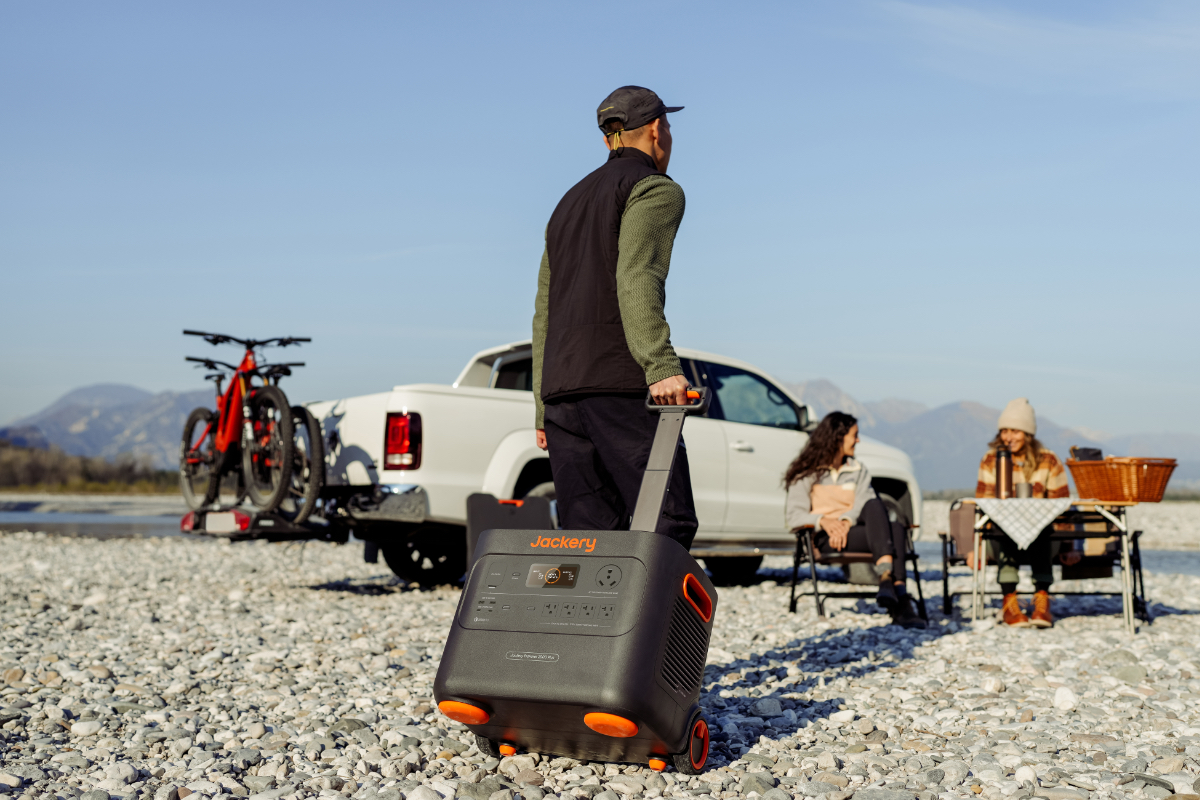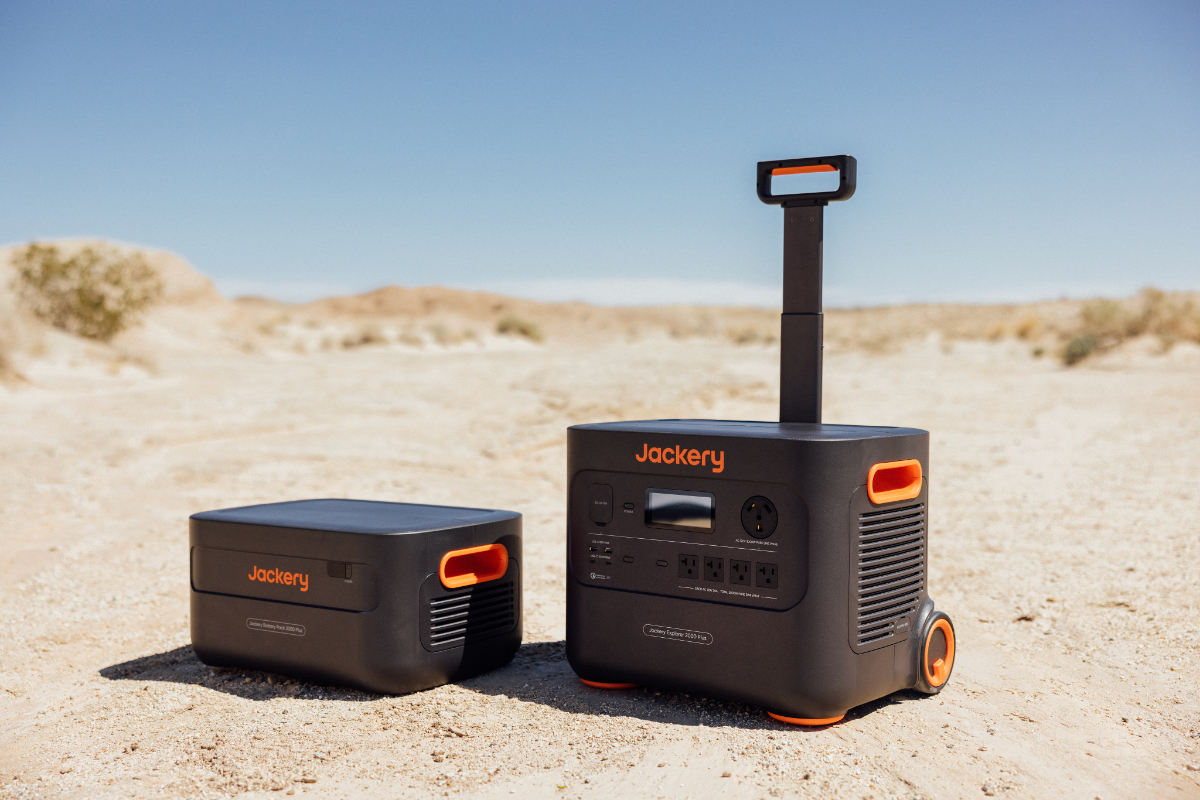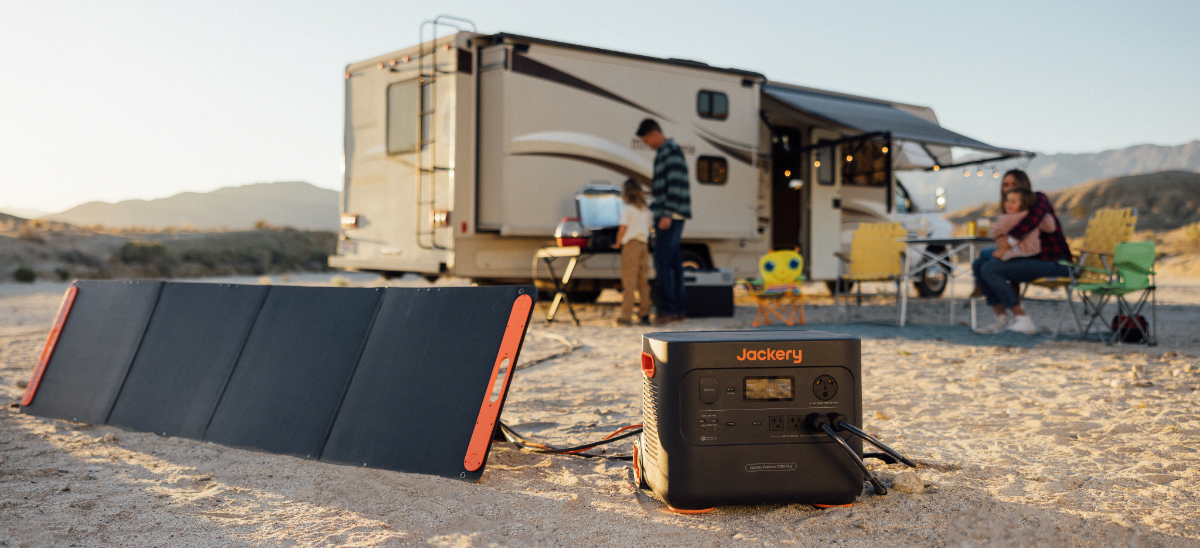Jackery Explorer 2000 Plus Review: Faster, Safer, and More Versatile
So far, 2023 has been the year of the portable power station. In the first few months, we’ve seen a slew of new offerings from a variety of brands, both established and just entering the market. Those devices included the impressive Jackery Explorer 3000 Pro, which set a new standard for performance and features. But as it turns out, that model was just a hint of what was to come from the company that remains the market leader in this increasingly competitive space.
Last week, Jackery announced the all-new Explorer 2000 Plus. At first glance, this model resembles the Explorer 3000 Pro in many ways, including coming with a built-in handle and a rugged set of wheels. But as it turns out, the latest addition to the Jackery lineup has a few tricks up its sleeve that separate it from its sibling and most of the competition, too.

Photo Credit: Jackery
Capacity, Power Output, and Charging Ports
When reviewing any portable power station, it is a good idea to get the essential specs out of the way first. This allows us to set a baseline for how the device performs before moving on to the things that genuinely separate one particular model from another. Those specs include battery capacity, power output and input, and the number and type of charging ports.
The Explorer 2000 Plus is the first Jackery model to use a lithium iron phosphate (LifePO4) battery. These types of power cells are safer and have a much longer life compared to lithium-ion batteries. They also perform exceedingly well, giving this power station more than 2,042 watt-hours of capacity and a sustained output of 3000 watts. The unit is even capable of temporarily handling a surge output of up to 6000W, making it well-suited for powering small appliances, mobile devices, laptops, CPAP machines, and LCD TVs.
As you would expect, Jackery has armed the Explorer 2000 Plus with plenty of charging ports. The device has four 120V AC outlets and a heavy-duty 20A 3000W pure sine wave AC port. It also comes with a 12V DC vehicle charging port, two USB-A QC 3.0 ports, and two USB-C 100W ports. This lets users charge or operate up to ten devices and appliances simultaneously, including high-capacity items like power tools or a portable air conditioner.
How do those specs translate to real-world operations? The Explorer 2000 Plus’s standard specs allow it to run a portable refrigerator for up to 14 hours, a microwave oven for 1.5 hours, or an LCD TV for 15 hours. It will also recharge a laptop more than a dozen times and a smartphone over 100 times.

Photo Credit: Jackery
Fast Charging and Expandability
One feature that sets the Explorer 2000 Plus apart from other power stations is its fast-charging capabilities, both by AC outlet and solar panel. When plugged into the wall, the device can go from zero to 100% charged in about two hours. This makes it quick and easy to top off the battery before leaving for the campsite, tailgate party, or even just the backyard.
Jackery has also made considerable advances in charging the Explorer 2000 Plus via solar. The unit supports up to 1200W of power input using energy from the sun. It also supports the use of a new type of panel that is 25% more efficient compared to older models. All of this translates to fully recharging the power station’s batteries in two hours, but in order to do that, you’ll need six 200W Jackery SolarSaga panels. Our test unit came with two such panels, which resulted in a more modest seven-hour recharge time under optimal conditions.
The other thing that sets the Explorer 2000 Plus apart from other Jackery power stations is that its capacity and power output are expandable. The company now offers a 2042Wh battery pack that plugs into the unit, effectively doubling its power storage. Adding a battery pack also doubles power output, taking it from an already-impressive 3000W all the way up to 6000W. That allows the power station to run even more energy-intensive tools and appliances. Add-on batteries like this one aren’t new to the industry, but this one is especially well-designed and easy to use. It also can be recharged directly using solar panels, which is something we haven’t seen from similar products in the past.
But the expandability story doesn’t end there. The Explorer 2000 Plus can actually connect to as many as five separate battery packs, expanding its capacity to an impressive 24 kilowatt-hours. That’s enough electricity to power an entire house for several days, creating a backup power solution that is versatile, modular, and easy to assemble. Considering the increasing number of severe weather events occurring across the country, it is easy to see why these high-capacity power stations are growing in popularity.

Photo Credit: Jackery
A Next-Generation Power Station
With the introduction of the Explorer 2000 Plus, Jackery has unveiled its first true next-generation power station. While the Explorer 3000 Pro gave hints of what was to come, this latest model delivers outstanding performance in a bulky—yet still portable—package. That includes safer and longer-lasting batteries with a lifespan that can withstand ten years of daily use. That is significantly longer than previous models, which used less-reliable batteries with significantly shorter lifespans.
The Explorer 2000 Pro’s fast-charging feature is also a game changer. Whether you’re plugging it into a wall outlet or recharging via solar panels, the power station’s batteries quickly collect electricity for your next adventure. This also makes it a much more viable option for off-grid camping or surviving a prolonged power outage. Knowing that you can add a significant amount of electricity back to the battery using solar alone gives you a clean and quiet power source that can be used almost indefinitely.
As with most of Jackery’s other models, the Explorer 2000 Pro can be controlled remotely via a smartphone app that connects over Bluetooth or Wi-Fi. This allows users to monitor the current state of the battery, how much power is flowing in and out, and adjust various settings. It even displays the current charge of all connected battery packs, which is especially handy when creating a home backup power solution.
Much of the information shown in the Jackery smartphone app is also displayed on the power station’s LCD screen. Bright, vibrant, and easy to understand, the LCD shows which charging ports are currently active, how much battery life remains, the flow of electricity in and out, and more. This is fairly standard equipment for a device of this kind, but Jackery’s screens are always top-notch and well-designed.

Photo Credit: Jackery
A Clean Energy Ecosystem
The Explorer 2000 Plus is another example of Jackery’s commitment to creating a clean and sustainable energy ecosystem. The switch to LifePO4 batteries means the unit will have a much longer lifespan, reducing waste and the need for recycling depleted batteries. The company’s new solar panels are also much more efficient, creating a steady flow of power using just the rays of the sun.
All of this makes Jackery’s latest power station the best option currently available for camping off the grid or for creating a home backup solution. Its expandability, quick-charging capabilities, and long lifespan give it best-in-class performance, especially when factoring in portability, capacity, and power output. But that level of performance doesn’t come cheap. The Explorer 2000 Plus power station is priced at $2,199, and each add-on battery pack sells for $1,599. The new SolarSaga 200W solar panels will also set you back $699 each.
Those price tags are likely to induce sticker shock from some potential buyers, but for those who need this level of performance, these devices are worth every penny. That includes RVers looking for a reliable, clean, and quiet power source for use at the campsite and at home. The Explorer 2000 Plus delivers that and a whole lot more, making it the best portable power station currently on the market.
For a limited time, Jackery is offering discounts on the Explorer 2000 Plus, its battery pack, and the new solar panels. To learn more about these products, visit the Jackery website.
The post Jackery Explorer 2000 Plus Review: Faster, Safer, and More Versatile appeared first on RV.com.






